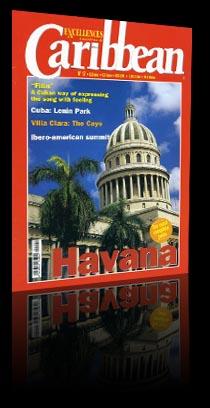La Habana
A wide plan for rescuing the colonial buildings provides a touch of distinction to Old Havana, the city that is now 480 years, with multicolor facades of special buildings, narrow streets and sufficient areas for historic-cultural tourism.
For Havana citizens, their city has a particular charm. Foreigner however who visits the city for the first time, fully share the emotions with the neighbors and enjoy sites endowed with a special magic in a city that has been recognized by UNESCO in 1982 and provided the title of Cultural Heritage of Mankind. In fact, the La Villa de San Cristóbal de La Habana was founded in 1515 under the rule of the insular governor Don Diego Velázquez. The date of the definitive settlement of the city occurred in November 16, 1519. Still one can breath along the street a maritime atmosphere. Spanish boats stopped in the island, full of gold, silver and other wealth coming from the south to continue their course to the metropolis. The strength of the village was such that privateers' and pirates' attacks started on the island. These attacks made King Phillip II to order a wide program of fortifications, of which still are preserved: Morro Castle, La Cabaña, La Punta, La Chorrera, La Fuerza and the remains of the city wall.
Long and short steps When strolling along Old Havana is convenient to start by The Templete, a building of Greek inspiration erected in 1828. Opposite is Arm Square, now a beautiful park. On one of the corners lies the Castillo de la Fuerza. The works of this military installation began in 1558. Now one enters by a well-repaired large door with small cannons at a side of the pit which still preserves water and a movable bridge made of fine Cuban woods. Around these Square or Plaza several old mansions are found, now turned into museums, truly interested places as the General Captains Palace, Palacio del Segundo Cabo, Casa del Conde de Santovenia (now Santa Isabel Hotel) or Casa de Obispo y Oficios. Castles are indispensable to be seen during the walk, in particular Morro Castle (Castillo de los Tres Santos de Reyes de El Morro), the most symbolic one, a construction work that began in 1589 by the military engineer Juan Bautista Antonelli, concluded in 1630. One should stroll along the Plaza Vieja (Old Square), that of Cathedral Square, of course. In addition to visit the Cathedral is also interesting to go to Santa Clara Convent, the Iglesia del Espíritu Santo (Holy Spirit Church), and other churches as that of Santo Ángel Custodio and Nuestra Señora de la Merced (Our Lady of Mercy) or that of Paula. Very close to this area is the point where "the lanchita de Regla, a town located on the other side of the harbor. On the other side of the bay is the Christ of Havana (a monumental sculpture) that overlooks the entire city with open arms.
The kingdom of habaguanex It is said that Cacique Habaguanex was ruling at the Spaniards' arrival in 1492 along a wide stretch that now comprises from Havana to the town of Mariel, located far on the west, in the area of Havana Province. Thus this is the origin of the name of the tourism enterprise that now operates in Old Havana. The Villa de San Cristóbal de La Habana has now many offers. Somewhat more than 4.5 km2 of the old area of Havana city, is now a place under programs of recovery of old buildings and of developing Habaguanex Company. Habaguanex was founded in 1994 in pursuance of the objectives set forth by the Office of the Historian of the City, Eusebio Leal Spengler. Among the ideas once conceived were the reconstruction of the historic area and the improvement of the social areas.
Modern Havana The commercial boom in a city like Havana turned the city in a very attractive place for cargo ships, reparations in shipyards and the presence of people everywhere. In fact, after the demolition of Havana Wall, at the end of the 19th century, buildings grew very fast. Places like the populous Vedado district, high and low areas were being transformed. Between the 1940's and the 50's, an urban boom was experimented and the population grew. Among others, El Vedado, Marianao, 10 de Octubre, Centro Habana, Guanabacoa, Regla are other districts that appeared. The industry and trade was developed in these centers, culture flourished and hotels like Habana Libre, Vedado, El Nacional were built. Such characteristics provide a distinction touch to the city that on the east counts on its own beaches as Santa María del Mar or Guanabo. This modern Havana, with its Mausoleum in honor to José Martí, Cuba's National Hero located at Revolution Square is the favorite site of visitors for its colors and the people.






























































